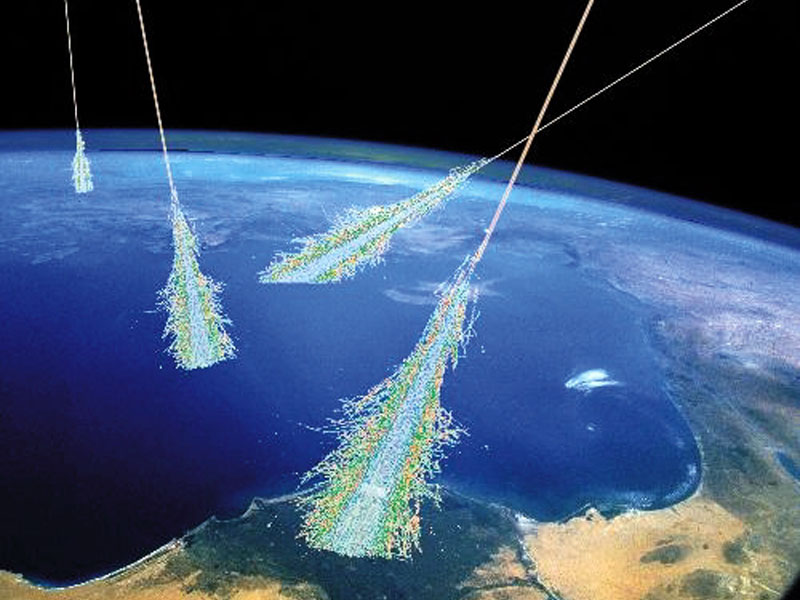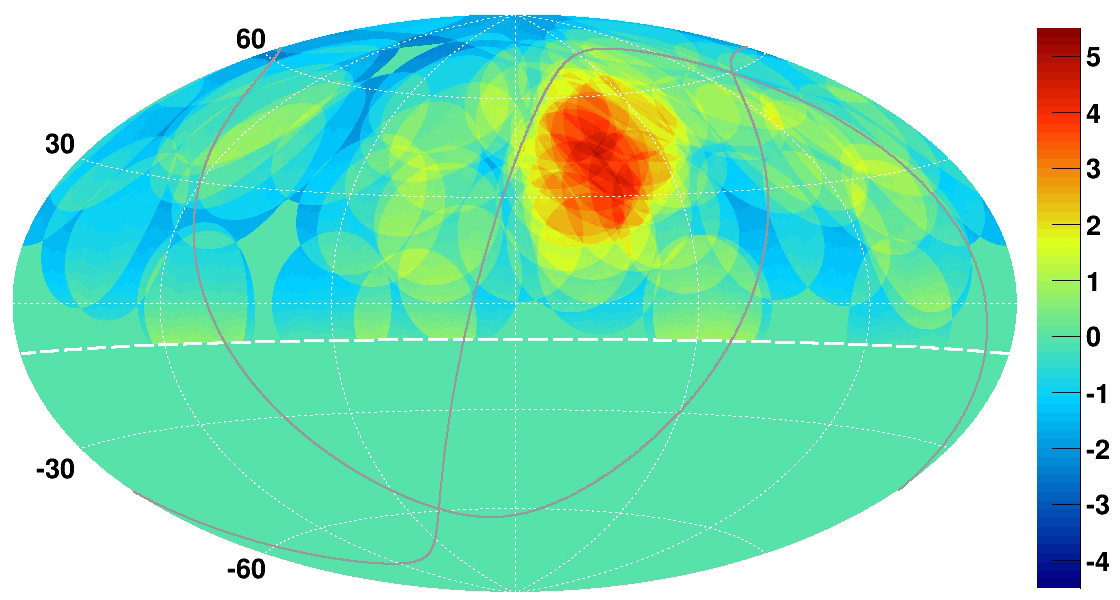
A massive telescope array in the Utah desert detected a hotspot of ultrahigh-energy cosmic rays coming from a region of the sky near the Big Dipper.
It's still not clear exactly what is causing the rays, but the hotspot could help researchers understand how the highest-energy particles in the universe are formed.
Cosmic rays
Cosmic rays are supercharged subatomic particles, such as atomic nuclei or protons, that are accelerated to blistering speeds. The sun spits out low-energy cosmic rays, and other cosmic rays form in the aftermath of exploding stars. The highest-energy rays are formed outside the Milky Way galaxy, however, and their source has been a mystery, said study co-author Gordon Thomson, a physicist and astronomer at the University of Utah in Salt Lake City. [Wacky Physics: The Coolest Little Particles in Nature]
"They have the kinetic energy of a pitched baseball," Thomson told Live Science. "These are very high energies, much higher than can be made on Earth in any particle accelerator."

Some physicists believe that they form when the whipping magnetic fields of supermassive black holes at the hearts of galaxies rip stars apart, sending out a beam of ionized particles called a blazar. Others believe that gamma ray bursts from exploding supernovas may be the culprits for these ultrahigh-energy cosmic rays, Thomson said.
Rare particles
Sign up for the Live Science daily newsletter now
Get the world’s most fascinating discoveries delivered straight to your inbox.
Cosmic rays regularly bombard Earth's atmosphere, but only three of the highest-energy particles reach the surface per square mile per century (1 per square kilometer per century), making them difficult to study, Thomson said.
As such, astronomers built a 300-square-mile (777 square kilometers) detector, called the Telescope Array, in a remote part of the Utah desert, where the sky is dark and clear. Whenever a cosmic ray hits nitrogen atoms in the atmosphere, it ionizes the nitrogen and sets off an "air shower," a cascade of other ionized particles.
When those ionized particles hit the plastic detectors, fluorescent molecules in the plastic register that with a flash of blue light.
The team has detected 100,000 such events over five years, 72 of which were cosmic rays of the highest energy levels.
Of those events, 19 came from a small region in the constellation Ursa Major, in the vicinity of the handle of the Big Dipper. That number is far more than what would be expected if these high-energy cosmic rays were coming uniformly from all directions of the sky.
"Twenty-six percent of our events come from 6 percent of the sky," Thomson said.
Possible source?
The hotspot contains an active blazar, known as Markarian 421, as well as a filament that contains a supercluster of galaxies. Either one of those celestial objects could be the source of the cosmic rays, but there are a lot of other objects in that region, and the team doesn't currently have enough data to pin down the cosmic rays to one culprit.
"All we know is there's something interesting going on there," Thomson said.
To narrow down the potential sources, the researchers are hoping to expand the Telescope Array detector to be able to record many more high-energy cosmic rays.
The findings have been accepted for publication in the Astrophysical Journal Letters.
Follow Tia Ghose on Twitter and Google+. Follow Live Science @livescience, Facebook & Google+. Original article on Live Science.

Tia is the managing editor and was previously a senior writer for Live Science. Her work has appeared in Scientific American, Wired.com and other outlets. She holds a master's degree in bioengineering from the University of Washington, a graduate certificate in science writing from UC Santa Cruz and a bachelor's degree in mechanical engineering from the University of Texas at Austin. Tia was part of a team at the Milwaukee Journal Sentinel that published the Empty Cradles series on preterm births, which won multiple awards, including the 2012 Casey Medal for Meritorious Journalism.










